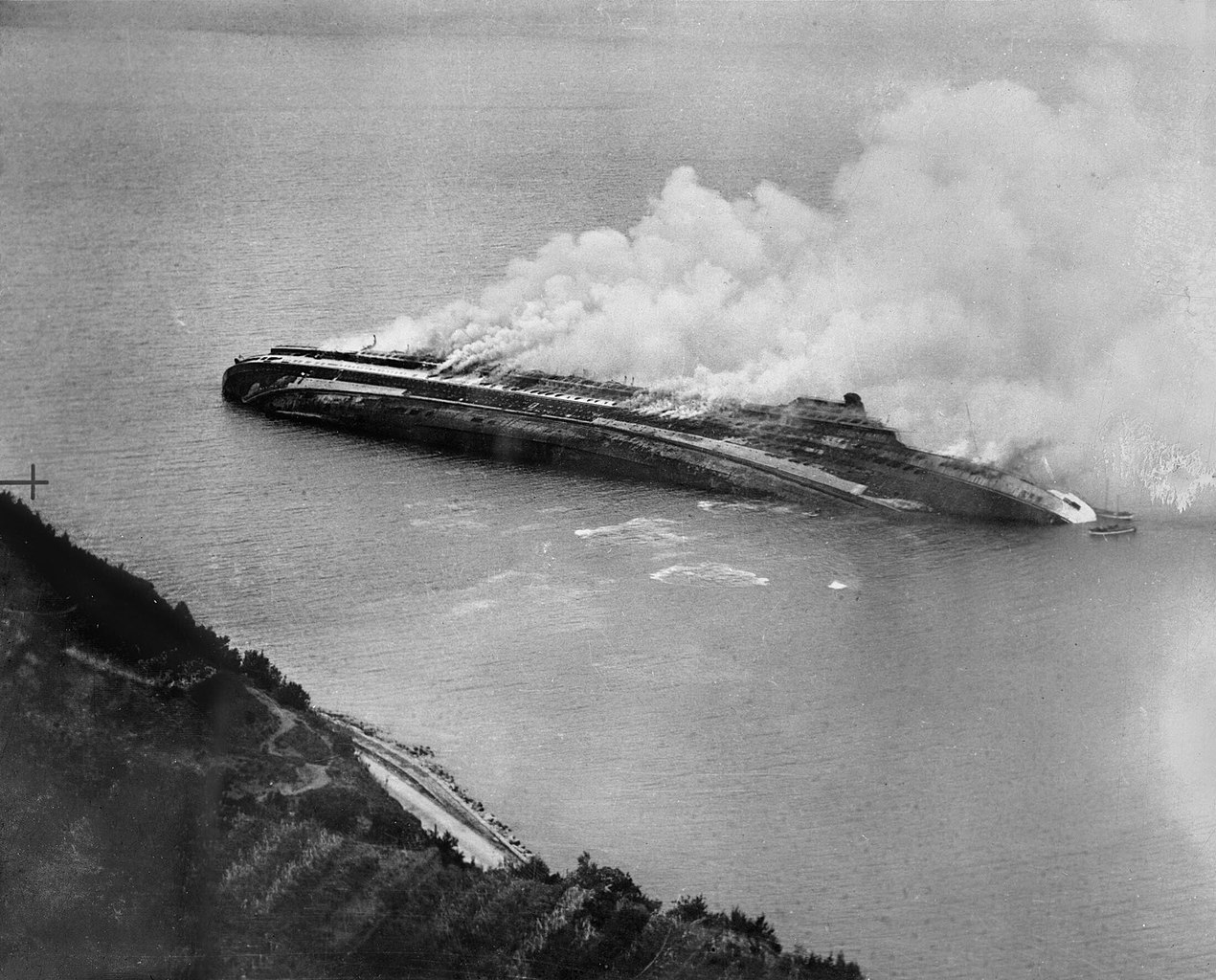In order to target the Italian liners Rex and Conte di Savoia, which were being employed as troop ships to North Africa, two aircraft flew very low, to roughly 300 feet and 390 feet, respectively
Bomber Command’s operations in Italy are frequently described by eyewitnesses as being tedious and taking a long time (around 9 hours), with only the thrill of seeing the snow-covered Alpine peaks and the brief drama of hitting the target serving as breaks.
However, the previous Italian raids in 1940 and 1941 frequently turned out to be far wilder adventures. Individual aircraft chose their own route to the target, and once there, they often engaged in “further activities” such as the low-level shooting-up of flak positions, airfields, road convoys, moving trains, or ocean liners, as described by Richard Worrall in his book The Italian Blitz 1940–1943.
Early in December 1940, the “Italy assignment” was handed to 3 Group, which flew the Vickers Wellington Mk Ic, as 4 Group had been taken off Italian operations due to the need to conserve its Whitley Mk Vs for significant fire-raising missions against German cities.
The operational directives from HQ Bomber Command stated that they were to attack Italian targets, but only with a maximum of 15 aircraft; they were given a fixed list of German targets from which to choose alternatives if the weather prevented attack upon Italian objectives, but it was obvious that the latter was the priority. When 15 aircraft were assigned to bomb the Royal Arsenal in Turin on December 4th, the 3rd Group launched its first Italian operation. Wellingtons were also sent to Italy on December 18th, December 21st, and January 11th and 12th, 1941.
The oil refineries at Porto Marghera, close to Venice, were to be attacked the following night by seven Wellington aircraft. The bombers made direct strikes on the target area: one 1,000 lb bomb dropped from 700 ft. generated a big explosion with reddish/white smoke and flames to 400 ft.; additional bombs caused oil storage tanks to burst; and a sizable building to fall and disintegrate.

The target area was characterized by aircrews as being a mass of flames fifteen minutes into the strike. However, the aircraft of 3 Group had only traveled a short distance (a round trip of 1,500 miles) to discharge their modest bombloads (at that range of about 1,500lb). With little chance of being intercepted – in early 1941 the Regia Aeronautica had yet to train for the night-fighter role – the Wellingtons used their machine guns to strafe the oil refinery and flak positions.
In order to target the Italian liners Rex and Conte di Savoia, which were being employed as troop ships to North Africa, two aircraft flew very low, to roughly 300 feet and 390 feet, respectively. According to the raid report, a second Wellington that was returning struck the Padua aerodrome from an astounding 20 feet away.
Such behavior perfectly captures the daring, if occasionally careless, the endeavor of the initial bomber raids on Italy. Although the daylight operation to Milan by the Lancasters of 5 Group on October 24, 1942, which culminated in some low-level flying and machine gun strafing, would be the final “wild ride,” operations did become a lot more organized, more controlled, and, ultimately, more devastating from autumn 1942 onward.
Regarding the two Italian liners, the Rex would be sunk near Trieste on September 8, 1944, when the RAF attacked it along with Beaufighters from the South African Air Force. German forces destroyed the Conte di Savoia in Venice on September 11, 1943, but it was later salvaged and demolished in 1945.
The Italian Blitz 1940–43 is published by Osprey Publishing and is available to order here.

Photo by Crown Copyright

